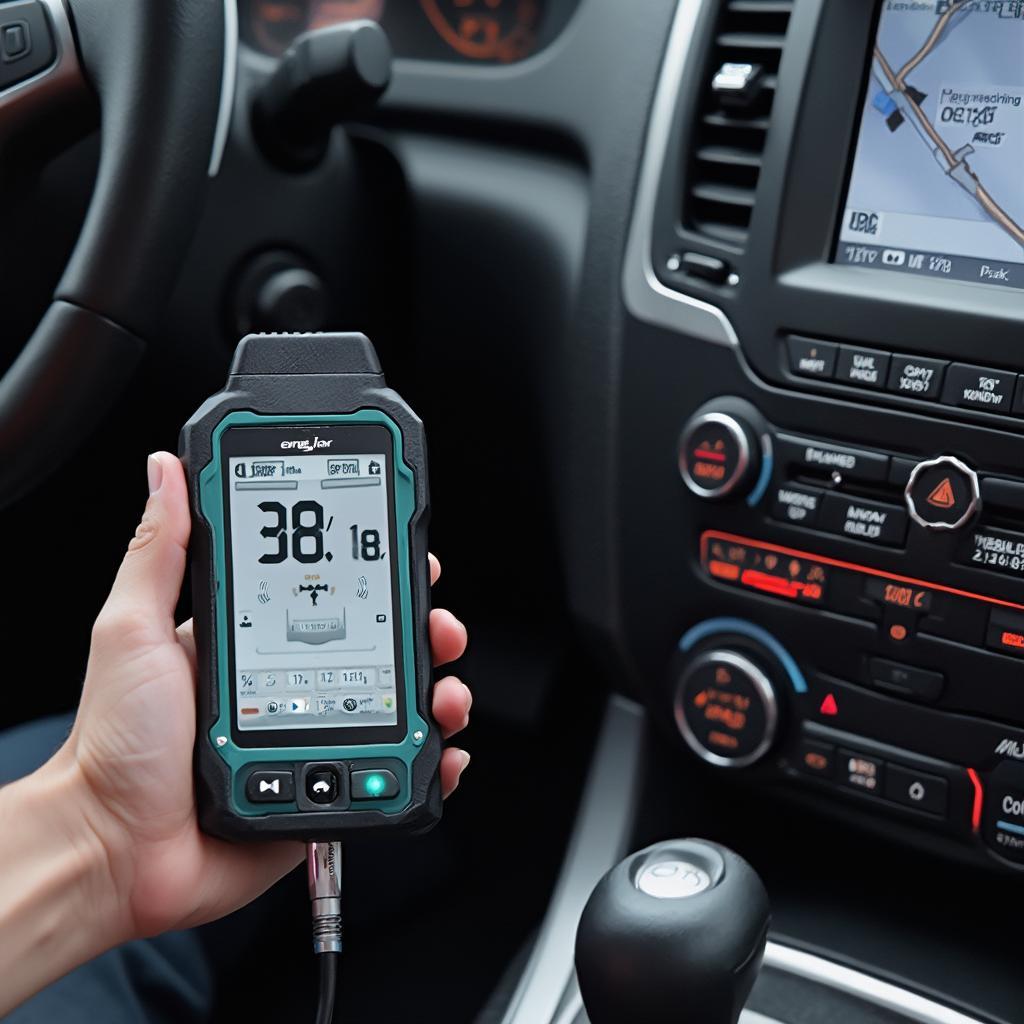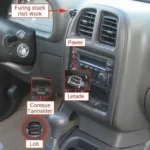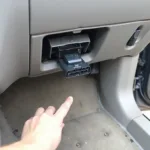An OBD2 scanner is a valuable tool for diagnosing car problems, but can an OBD2 scanner read thermostat open or close? This is a common question among car owners, and understanding the capabilities and limitations of your OBD2 scanner is crucial for effective vehicle maintenance. We’ll explore the relationship between OBD2 scanners and thermostats, helping you understand what information you can realistically expect to glean from your diagnostic tool.
Understanding the OBD2 Scanner and Thermostat Connection
While an OBD2 scanner can’t directly tell you if your thermostat is physically “open” or “closed,” it can provide indirect clues about its operation. The thermostat’s role is to regulate engine temperature by controlling coolant flow. A malfunctioning thermostat can lead to various issues, impacting engine performance and fuel efficiency. Your OBD2 scanner can detect these performance issues, pointing towards a potential thermostat problem.
How an OBD2 Scanner Indirectly Diagnoses Thermostat Issues
The OBD2 scanner monitors various engine parameters, including coolant temperature. If the engine takes too long to warm up or consistently runs too hot or too cold, the scanner will register these temperature discrepancies. These readings can be indicative of a stuck open or closed thermostat. For example, a consistently low coolant temperature could suggest a stuck open thermostat, while overheating could indicate a stuck closed one.
Decoding the Data: What to Look For
Understanding the data your OBD2 scanner provides is key to identifying a potential thermostat issue. Look for trouble codes related to the cooling system, such as P0128 (Coolant Thermostat (Coolant Temperature Below Thermostat Regulating Temperature)). This code specifically suggests a problem with the thermostat’s ability to regulate temperature effectively. Additionally, monitor the coolant temperature readings over time. Significant fluctuations or readings outside the normal operating range can be warning signs.
Beyond the OBD2 Scanner: Further Diagnostic Steps
While the OBD2 scanner is a helpful starting point, it’s essential to remember that it doesn’t provide a definitive diagnosis. If you suspect a thermostat issue based on the readings, further diagnostic steps are necessary. These could include physically inspecting the thermostat, checking coolant levels, and pressure testing the cooling system.
When to Consult a Professional Mechanic
If you’re unsure about interpreting the data from your OBD2 scanner or performing further diagnostic tests, consulting a qualified mechanic is always recommended. They have the expertise and specialized tools to accurately diagnose and resolve thermostat problems.
Can an OBD2 Scanner Read Thermostat Position? Direct vs. Indirect Readings
It’s important to clarify that an OBD2 scanner doesn’t directly read the thermostat’s position. It doesn’t have a sensor specifically for determining if the thermostat is open or closed. Instead, it relies on indirect readings, like coolant temperature and trouble codes, to infer the thermostat’s operational status. This is a crucial distinction to understand when using an OBD2 scanner for diagnosing potential thermostat issues.
Limitations of OBD2 Scanners in Thermostat Diagnosis
While OBD2 scanners are incredibly useful tools, they do have limitations. They can’t pinpoint the exact cause of a cooling system problem with absolute certainty. For example, similar symptoms could be caused by a faulty coolant temperature sensor, a radiator fan malfunction, or a low coolant level. Therefore, further investigation is always necessary to confirm the root cause.
Conclusion: Using Your OBD2 Scanner Effectively for Thermostat Diagnosis
So, can an OBD2 scanner read thermostat open or close? Not directly, but it can offer valuable clues. By monitoring coolant temperature, checking for relevant trouble codes, and understanding the limitations of your scanner, you can use it effectively as a first step in diagnosing potential thermostat issues. Remember to always follow up with further diagnostic tests if needed and consult a professional mechanic for expert advice. Properly understanding and utilizing your OBD2 scanner can help you keep your car running smoothly and efficiently.
FAQ
-
What is the most common code for a thermostat issue? P0128 (Coolant Thermostat (Coolant Temperature Below Thermostat Regulating Temperature)) is a frequently encountered code.
-
Can I replace a thermostat myself? While possible, it’s recommended to consult a mechanic if you’re not comfortable working on your car’s cooling system.
-
How much does a thermostat replacement typically cost? Costs vary depending on the vehicle and labor rates, but it’s generally a relatively affordable repair.
-
How often should I check my coolant levels? It’s good practice to check your coolant levels at least once a month.
-
Can a bad thermostat damage my engine? Yes, a malfunctioning thermostat can lead to overheating or insufficient warm-up, both of which can cause engine damage.
-
What are the symptoms of a stuck open thermostat? Symptoms include slow engine warm-up, poor fuel economy, and the engine running cooler than normal.
-
What are the symptoms of a stuck closed thermostat? Symptoms include engine overheating, coolant leaks, and potential engine damage if not addressed promptly.
For further assistance, please contact us via WhatsApp: +1(641)206-8880, or Email: [email protected]. Our customer service team is available 24/7.


